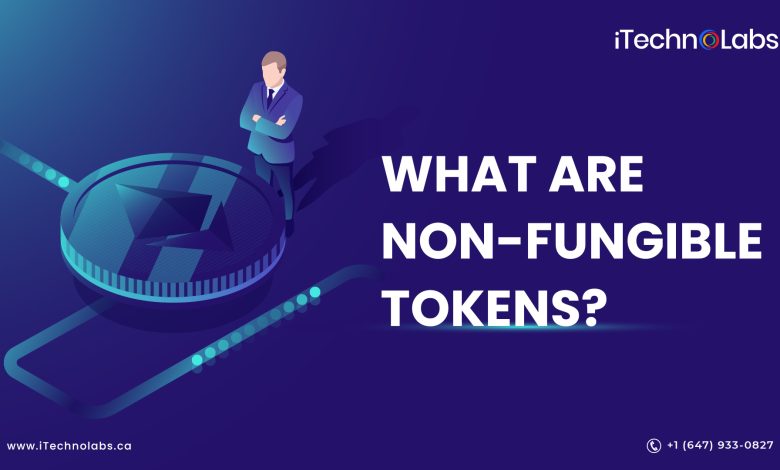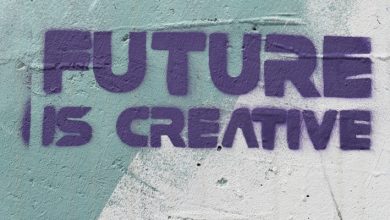Introduction to Non-Fungible Tokens (NFTs)

- Understanding the concept of Non-Fungible Tokens (NFTs)
- Exploring the unique characteristics of NFTs
- The rise of NFTs in the digital art world
- How NFTs are revolutionizing ownership in the digital space
- Challenges and controversies surrounding NFTs
- The future of NFTs: potential applications and impact
Understanding the concept of Non-Fungible Tokens (NFTs)
Non-Fungible Tokens (NFTs) are unique digital assets that represent ownership of a specific item or piece of content. Unlike cryptocurrencies such as Bitcoin or Ethereum, which are interchangeable and have the same value, NFTs are one-of-a-kind and cannot be exchanged on a like-for-like basis.
NFTs are built using blockchain technology, which ensures that each token is verifiable, secure, and cannot be replicated. This makes them ideal for proving ownership of digital art, collectibles, virtual real estate, and other unique items in the digital realm.
One of the key features of NFTs is their indivisibility, meaning that they cannot be divided into smaller units like cryptocurrencies can. This makes each NFT a distinct and irreplaceable asset, adding to its value and exclusivity.
The concept of NFTs has gained significant popularity in recent years, with artists, musicians, and creators embracing this technology to monetize their work and engage with their fans in new and innovative ways. NFTs have also opened up new possibilities for digital ownership and provenance, allowing creators to retain control over their creations and ensure that they are compensated fairly for their work.
Overall, NFTs represent a paradigm shift in how we perceive and interact with digital assets, offering a new way to buy, sell, and collect unique items in the digital space. As the NFT market continues to grow and evolve, it will be interesting to see how this technology shapes the future of digital ownership and creativity.
Exploring the unique characteristics of NFTs
Non-fungible tokens (NFTs) have gained significant popularity in recent years due to their unique characteristics that set them apart from traditional cryptocurrencies. One of the key features of NFTs is their indivisibility, meaning that each token is distinct and cannot be exchanged on a like-for-like basis with another token. This uniqueness is what makes NFTs valuable to collectors and investors alike.
Another defining characteristic of NFTs is their immutability, which refers to the fact that once a token is created and recorded on a blockchain, it cannot be altered or tampered with. This ensures the authenticity and provenance of the digital asset, giving buyers confidence in the ownership of their NFT.
Additionally, NFTs are programmable, allowing creators to embed specific attributes, metadata, and even royalties directly into the token. This feature enables artists and content creators to retain control over their work and earn royalties whenever their NFT is sold or traded in the secondary market.
Furthermore, NFTs are interoperable, meaning that they can be bought, sold, and traded across different platforms and marketplaces. This seamless transferability enhances the liquidity of NFTs, making them a versatile and valuable asset for collectors and investors looking to diversify their portfolios.
In conclusion, the unique characteristics of NFTs, including indivisibility, immutability, programmability, and interoperability, have revolutionized the way digital assets are created, bought, and sold. As the NFT market continues to grow and evolve, it is essential for investors and collectors to understand these features to make informed decisions and maximize the potential of their NFT investments.
The rise of NFTs in the digital art world
The rise of NFTs in the digital art world has been nothing short of revolutionary. Non-Fungible Tokens have opened up a whole new realm of possibilities for artists, allowing them to tokenize their work and sell it as unique digital assets. This has completely transformed the way art is bought and sold, with NFTs providing a level of authenticity and scarcity that was previously impossible to achieve in the digital space.
One of the key reasons behind the popularity of NFTs in the art world is their ability to provide proof of ownership and provenance. Each NFT is stored on a blockchain, which acts as a digital ledger that records every transaction associated with the token. This means that buyers can be confident in the authenticity of the artwork they are purchasing, as well as the fact that it is a one-of-a-kind piece.
Furthermore, NFTs have also created new opportunities for artists to monetize their work. By selling their art as NFTs, artists can receive royalties every time their work is resold, providing them with a continuous stream of income. This has the potential to completely change the way artists are compensated for their work, ensuring that they are fairly rewarded for their creativity.
How NFTs are revolutionizing ownership in the digital space
Non-Fungible Tokens (NFTs) have been making waves in the digital space, revolutionizing the concept of ownership. Unlike traditional cryptocurrencies like Bitcoin or Ethereum, NFTs are unique digital assets that represent ownership of a specific item or piece of content. This uniqueness is what sets NFTs apart, as each token is indivisible and cannot be replicated.
One of the key ways in which NFTs are changing ownership in the digital space is through their ability to provide proof of authenticity and ownership. By utilizing blockchain technology, NFTs create a transparent and secure record of ownership that cannot be altered or tampered with. This has significant implications for creators, as it allows them to monetize their digital creations in a way that was previously impossible.
Another way in which NFTs are revolutionizing ownership is by enabling creators to retain control over their work. With traditional digital assets, ownership can be easily transferred or duplicated without the creator’s consent. However, NFTs allow creators to embed specific rules and conditions into the token itself, ensuring that they receive royalties whenever their work is sold or transferred to a new owner.
Challenges and controversies surrounding NFTs
There are several challenges and controversies surrounding Non-Fungible Tokens (NFTs) that have sparked debates within the digital art and collectibles community. One of the main concerns is the environmental impact of NFTs, particularly due to the energy-intensive process of minting and trading these tokens on blockchain networks. Critics argue that the carbon footprint of NFTs is significant and unsustainable, leading to discussions on how to make the technology more eco-friendly.
Another issue is the lack of regulation and oversight in the NFT market, which has resulted in instances of copyright infringement and intellectual property theft. The decentralized nature of blockchain technology makes it difficult to enforce copyright laws and protect artists from unauthorized use of their work. This has raised questions about the legal implications of NFT ownership and the need for clearer guidelines to prevent fraud and exploitation.
Furthermore, the volatility of the cryptocurrency market has also impacted the value of NFTs, leading to concerns about the long-term sustainability of investing in digital assets. The speculative nature of NFTs has attracted both investors and speculators, driving up prices to unprecedented levels and creating a bubble that some fear may burst in the future. This has raised questions about the intrinsic value of NFTs and whether they are a viable investment or just a passing trend.
The future of NFTs: potential applications and impact
The future of NFTs holds immense potential for various applications across industries, with a significant impact on how digital assets are bought, sold, and traded. As the technology continues to evolve, we can expect to see NFTs being used in areas such as art, music, gaming, real estate, and even identity verification.
One of the key advantages of NFTs is their ability to provide proof of ownership and authenticity for digital assets. This has the potential to revolutionize the way artists and creators monetize their work, by allowing them to sell unique digital items directly to consumers without the need for intermediaries.
In the art world, NFTs have already gained traction as a way for artists to tokenize their work and create a new revenue stream. By minting their creations as NFTs, artists can ensure that each piece is unique and cannot be replicated, providing collectors with a sense of exclusivity and ownership.
In the music industry, NFTs have the potential to transform how music is distributed and consumed. Artists can use NFTs to sell limited edition albums or exclusive access to concerts, creating new opportunities for fan engagement and monetization.
In the gaming sector, NFTs can be used to create unique in-game items that players can buy, sell, and trade with each other. This not only adds a new layer of value to gaming experiences but also opens up new revenue streams for game developers.
Overall, the future of NFTs is bright, with the potential to disrupt traditional markets and create new opportunities for creators, collectors, and consumers alike. As the technology continues to mature, we can expect to see even more innovative applications and use cases emerge, shaping the digital economy of tomorrow.



